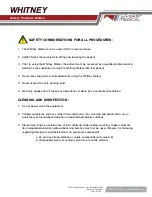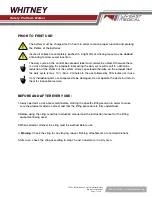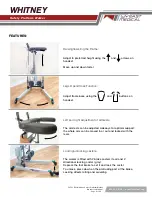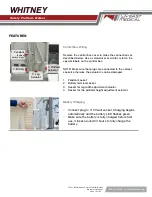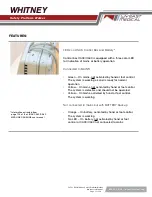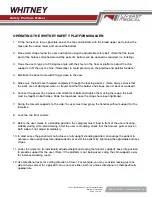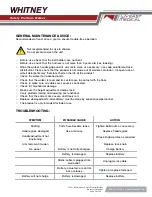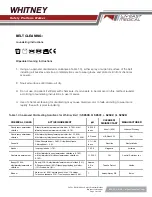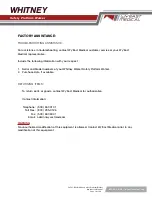
800.255.3126 | wyeastmedical.com
52521 R01 Whitney Safety Platform Walker
Operator’s Manual
Page 12 of 20
WHITNEY
Safety Platform Walker
OPERATING THE WHITNEY SAFETY PLATFORM WALKER:
1. Fit the harness as low as possible across the hips and bottom with the broad upper part around the
hips and the narrow lower part around the bottom.
2. Place waist strap around the user and tighten using the adjustable safety belt. (Note that the lower
part of the harness attached around the patient’s bottom can be opened as required (i.e. toileting).
3. Place the user’s legs at a 90 degree angle with their feet on the floor or platform. Adjust the shin
supports to fit the user’s shins. (Remember to avoid pressure on the patellae and patellar tendons)
4. Maximize the base frame width to get close to the user.
5. Make sure the belts are threaded completely through the locking devices. (Note: Always check that
the belts are not damaged, worn, or frayed and that the holder and straps are not bent or crooked).
6. Connect the power rise harness and attachment belts and tighten them using the loops; the belts
must be taught on both sides. Slide the loop back once the straps have been tightened.
7. Swing the forearm supports to the side; the user must now grasp the handles without support for the
forearms.
8. Lock the two front casters.
9. Before the user raises to a standing position, the caregiver must stand in front of the user ensuring
stability during sit-to-stand raising. After the user is standing, check that the harness pulls evenly on
both sides; if not, adjust immediately.
10. In most cases the patient will not achieve a fully upright standing position; encourage the patient to
achieve a final upright posture independently or assist the patient by tightening the adjustable harness
straps.
11. Lower the walker to its individually adjusted height and swing the forearm supports back into position
to provide support for the user. (Note: if the platform is not being used, swing the shin supports away
for increased walking room).
12. Use directional locks for setting direction of travel. For example, you may consider locking just one
side to help correct for a gait drift. You can lock either, both, or unlock directional as therapeutically
appropriate.






